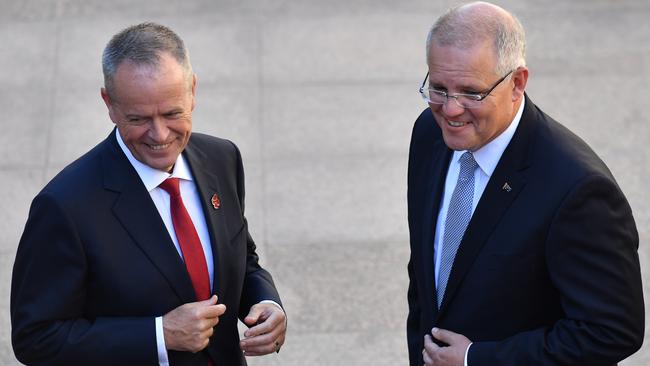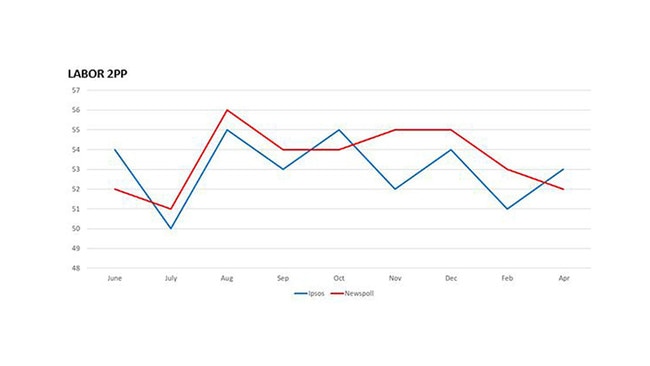Newspoll, Ipsos: a tale of two polls
Two very similar polls couldn’t have been reported on more differently today.

Today saw the release of two opinion polls.
Under the headline ‘Budget fails to save Coalition’ The Sydney Morning Herald and The Age reported that voters embraced the budget but support for the Coalition still slipped. This was based on a poll of 1,200 voters conducted by Ipsos between 3-6 April.
In contrast, The Australian reported that the government had benefited from a budget bounce, based on a Newspoll of 1,799 voters conducted between 4-7 April.
While the claims made could not be more different the underlying results were very similar. The Ipsos poll had Labor leading on a two party preferred basis 53:47. The corresponding Newspoll figure was 52:48.
Further to this, the Ipsos poll confirmed that voters rated the federal budget as one of the fairest in years with 38 per cent expecting to be better off and 24 per cent worse off. The Newspoll respondents also gave the thumbs up to the budget with 34 per cent expecting to be better off and 19 per cent worse off.
The two polls also had Scott Morrison extending his lead over Bill Shorten as preferred (Ipsos) or better (Newspoll) Prime Minister.
With the results of the two polls so similar it seems incomprehensible how the reporting of the polls could be so different.
The answer lies in the stability of the polls over time.

Both polls showed the gap between the Coalition and Labor narrowing in Malcolm Turnbull’s final days as Prime Minister. Then, following the leadership spill, the gap blew out to 56:44 (Newspoll) and 55:45 (Ipsos).
Since then the paths of the two polls have been quite different. In the Newspoll timeseries Labor 2PP has generally declined over time as the gap between the parties narrows. In contrast, the Ipsos timeseries is typified by distinct jumps in support for Labor followed by a slump in support.
Each of these jumps corresponds to around 300,000 voters changing their mind but then changing it back again in the next month.
The consequence of this movement is that the reporting of the Ipsos poll depends upon where they are in the up/down cycle. In February the phantom Ipsos bounce narrowed the gap between the Coalition and Labor to 51:49.
This meant that if the Coalition was to gain any benefit from the budget, which all polling has suggested is the case, then the Coalition should be on par with Labor or possibly even ahead. That hasn’t happened as the Ipsos poll has taken its now customary bounce in the opposite direction.
The stability and reliability of Newspoll over time has been the basis of establishing this poll as the gold standard in polling in Australia. Newspoll has also been the most accurate poll at both federal and state elections. It would appear that the accuracy of the final Ipsos poll in the forthcoming federal election will depend upon where its last bounce lands.
David Briggs is the YouGov Galaxy Managing Director.



To join the conversation, please log in. Don't have an account? Register
Join the conversation, you are commenting as Logout